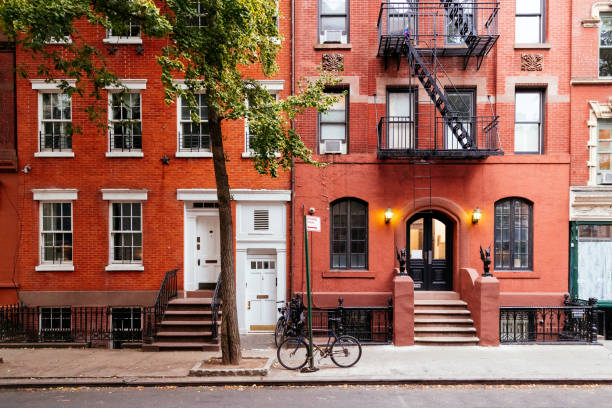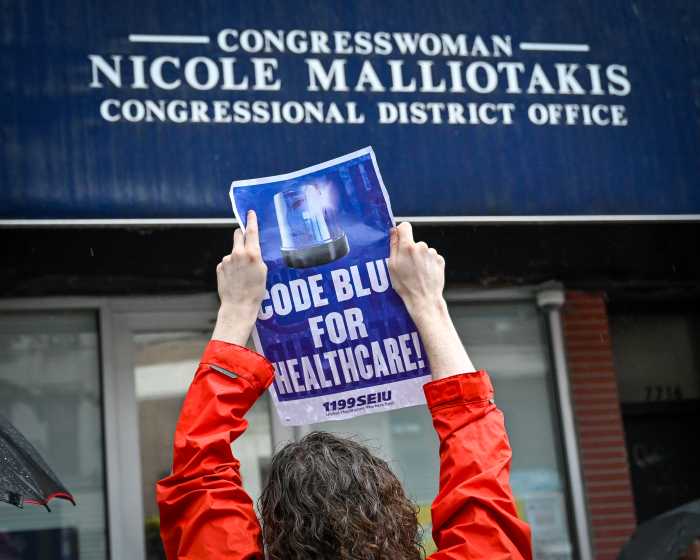
BY CLAYTON PATTERSON | I appreciate the debate going on around Soho House. Does a private, exclusive, expensive-to-join, membership-only art club belong on Ludlow St.? A reasonable question. People agree that so much of the old Lower East Side has been gentrified and there is not much left to save. What are people doing to save what little is left? Are the people against Soho House supporting the few struggling artists left in the community?
How many people are helping Shell Sheddy save her L.E.S. photo archive? Or buying Peter Missing’s inexpensive artwork? Or supporting John Penley’s protest efforts to bring attention to the human suffering connected to gentrification? John, a well-known and respected L.E.S. photojournalist, knows the price of gentrification: He is now homeless.
What seems to be the norm is, rather than actually doing something, it’s easier to go on the computer, use a pseudonym, and make caustic remarks criticizing or supporting whatever it is the writer is for or against. If people want to save some of what is left, they have to do something to support what’s still here. They have to stand up, be seen, be counted. Have a plan. A Vision. A goal.
For example, it makes me question the seriousness of the debate to save what is left of the old community when I read the flier to save the Meltzer Tower park. Turn over the flier and there is a list of local politicians to call. To begin with, the list is incomplete. It does not have the phone number to some of the local politicians, like Assembly Speaker Sheldon Silver or Councilmember Rosie Mendez — or former Councilmember Margarita Lopez, now a New York City Housing Authority board member.
Soho House is not the problem. In fact, I have met the owner, a real person, and I have met Rachel Smith, who controls who gets a Soho House membership. They both seem like real people, good people, people who at least have some kind of humanist vision of what makes a community. It may not be my vision — but, for the most part, the community I love is gone.
Compare Soho House to the Extell Corporation, which bought 17 Lower East Side buildings for $72 million. What is Extell? Who owns Extell?
Change was and is important. It is just that the pendulum of change has swung too far over to the money side. It is not like the old L.E.S. was a utopian village. Take Hell Square — the area between Houston and Delancey Sts., Essex to Allen Sts. — before the Entertainment Zone. Just to pull a few examples out of my photography archive. … Remember the abandoned crumbling buildings on Ludlow St.? Or when the young junior high school student, in school, with a pair of scissors, killed a drug dealer’s son and the family had to leave Ludlow? Or when Tony the drug seller was shot on Essex and no ambulance or police showed up and a Delancey St. car service drove and I drove him to Bellevue? I’ve got one photo of that. Or when Fernando and his Hell Raisers heroin crew ran Ludlow, from Stanton to Houston? Or young, beautiful Anna, whose father was in jail for murder, who started to grow up and run wild, eventually getting eaten up by the streets? Or when NETA started taking over the dope spots? Or when young PEEWEE was riding his bicycle on Rivington and Orchard and took a stray bullet in the leg? Or when the Chinese man’s face was slashed up in a robbery gone bad, and so on?
We must be careful to not exaggerate how wonderful the old L.E.S. was. We must find a balance. We need the people to stop hiding behind fake names on the computer and get out and do something. We need political change. We need new blood in our political system. Out of all the complainers, there must be someone who has a vision that includes a place for the poor, the struggling, the rent-controlled and rent-stabilized, the local mom-and-pop businesses. A leader who can fight to protect the rights of the long-term residents in the community. Someone who will fight for We The People, All the People, instead of the sellouts we have representing us now.
For me, Soho House coming to Ludlow is not such a crisis of change. Soho House is looking to take over an already commercial property. This is much different than when the Economakis family evicted all the families in 47 E. Third St., a doublewide tenement building, so they could have a one-family mansion.
It is easy to be against. We need someone who can fight for the rights of all of us.
Take the example of the stalled, 20-plus-story luxury hotel that wiped out almost half of the local, small mom-and-pop businesses on the east side of Orchard St. and the west side of Ludlow St. This unregulated project was a complete failure right from the start.
Rebecca Moore, using her own name and face, stood up and fronted the fight to try and save some of what was being lost on her block, between Stanton and Houston Sts. She created the Ludlow Orchard Community Organization, or — in the acronym that sums up how they were being driven to distraction — L.O.C.O. In her dealings with the community board and local politicians to try and stop this hotel, she was called crazy, extremist. Eventually, she was so overcome by all the construction noise and lack of community support, that to save her own sanity, she had to eventually leave New York City — the place she was born and raised.
Ironically, it was her photographer father, Peter Moore, and his documentation of all that was lost with the destruction of Penn Station, who was, in large part, responsible for getting New York City to begin landmarking buildings. To read about Rebecca and her out-front fight to save her block, go to https://www.thevillager.com/villager_104/newgroupsgoingloco.html .


































